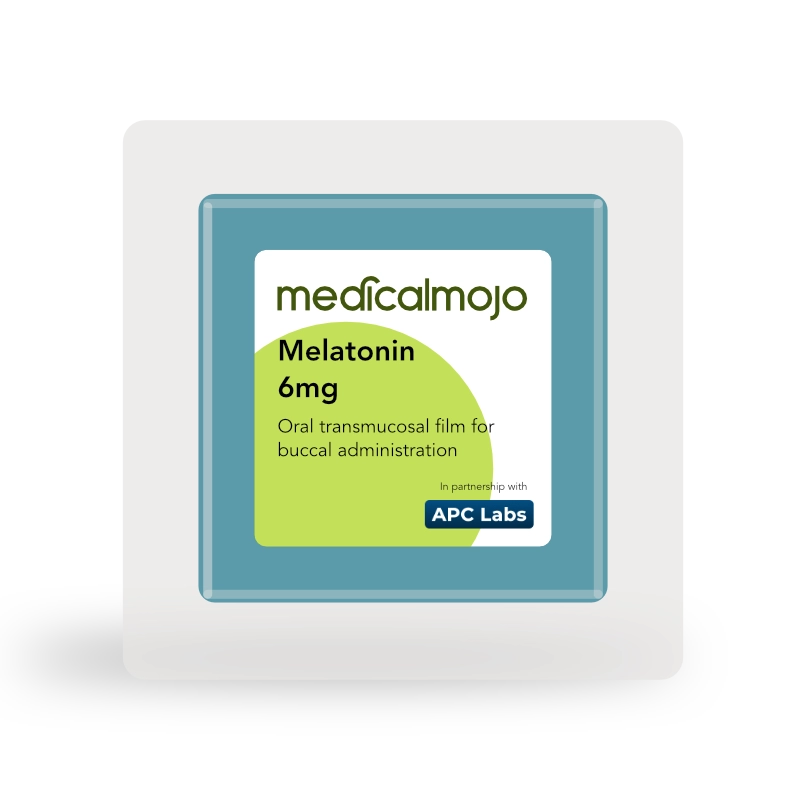What does this new viral acronym, ASMR, mean? I must admit that when I first stumbled across these videos after a friend suggested them to me, I was dumbstruck. When I searched YouTube for ASMR videos, I was surprised by how many views these seemingly simple videos were getting.
I’ll be honest: the cogs began to turn in my brain; this looks simple enough to whisper into a microphone and get millions of views rather than spend hours editing videos on sleep. Then, my scientific brain decided to make an appearance and shoved these knee-jerk capitalist emotional responses to the side.
Was there any evidence to ASMR? Can ASMR be used for sleep? What are ASMR sleep sounds? So, with my scientific head firmly screwed on like Worzel Gummidge used to do with his “thinking” head – quality childhood viewing Generation X will remember, I began my investigation into the world of ASMR.
Try the audio version of this article

ASMR sleep
ASMR stands for Autonomous Sensory Meridian Response (ASMR), which refers to the tingling sensations that start in the crown of the head in response to a range of stimuli. People who experience ASMR describe a delightful tingle that begins in the scalp and trickles down the spine, and sometimes, this tingling extends to the limbs. Lucky devils.
Although triggers differ among individuals, they typically encompass particular physical sensations, sounds, imagery, interpersonal interactions, or a blend of these inputs.
ASMR is often sought after not only for the pleasant sensations and emotions it elicits but also because many individuals find it beneficial in alleviating conditions such as depression, anxiety, and chronic pain. Since ASMR promotes a calming and relaxing environment, many people use it to help them sleep. The AMSR sleep sounds help them cast off into the ocean of dreams. When we at Sleephelp heard this, we had to investigate these claims.
What are ASMR triggers?
Some social environments trigger ASMR, while others can be annoying distractions. Let me paint a picture for you.
Picture yourself in a serene library setting. Behind you, two individuals engage in a whispered conversation while others quietly type on keyboards. Meanwhile, the faint sound of someone munching on an apple fills the air. As you glance up, you observe someone delicately flipping through the pages of a book, jotting down notes with a freshly sharpened pencil. I have to admit that this is my idea of heaven, and please forgive me for this self-indulgent moment. I like nothing more than hearing the rustle of the pages of books, the feel of the paper between my fingers and the gentle scratching of a pencil on a notebook. I can feel the tingle now just from this description. But I bet this sounds extremely boring for others and probably did not do anything for you.
As I mentioned before, ASMR is profoundly personal. It’s a subjective experience that the individual feels, but given its widespread popularity, experiments have been designed to determine whether this phenomenon is real or a myth.
So, while these seemingly mundane sights and sounds might annoy some, for others, they evoke a unique sensation known as Autonomous Sensory Meridian Response (ASMR). This delightful, tingling feeling begins at the crown of the head and gradually spreads throughout the body. These subjective sensations of ASMR, often described as “tingles,” and have been colloquially dubbed as “brain tingles” or “brain orgasms” by some.1
There is no one set of triggers; everyone has stimuli they respond to, which can be specific auditory or visual cues. ASMR occurs involuntarily in response to specific external (and often social) triggers, including whispering, soft speaking, tapping, scratching, slow and expert hand movements and close personal attention.2 Many people report experiencing ASMR since childhood but typically assume that ASMR is either a universal experience or one unique to them.3
Having trouble sleeping?
Try clinically proven sleep disorder treatments for a better night’s sleep.
Learn more
Scientific studies on ASMR
Two studies, in particular, aimed to determine the veracity of the claims made by ASMR enthusiasts. One study focused on the subjective response of people with ASMR and those who identified as non-ASMR to both ASMR videos and a control video. The second study examined objective physiological measurements such as heart rate after viewing ASMR videos.1 We’ll return to this study and its results in a while. If you want to check the results of this study, you can skip to the last sentence to find out. Did you check? Sorry, I lied. If you want to learn what the scientific study revealed, you’ll have to keep reading. As they used to say on the 90’s show X-files, “the truth is out there”.
Is ASMR like aesthetic chills?
Aesthetic chills refer to the more well-established sensory experiences, which include “shivers down the spine” that some lucky people get when listening to music or other profound aesthetic experiences, such as those associated with the emotion of awe. However, the two physiological responses are different. While ASMR induces a more relaxed and calming effect with a reduced heart rate.1, aesthetic chills are associated with excitement, physiological arousal, and an increased heart rate.4
ASMR for sleep
In recent years, there’s been a notable surge in interest surrounding the sensory phenomenon known as Autonomous Sensory Meridian Response (ASMR). As mentioned, it entails experiencing delightful tingling sensations that typically originate in the scalp and may extend to the back of the neck, upper spine, and beyond, depending on the intensity of the stimulus. Specific audio and visual stimuli trigger these sensations and are often accompanied by feelings of relaxation and comfort. ASMR has shown promise in temporarily assisting individuals dealing with sleep disorders, depression, stress, and chronic pain. Studies have verified everyday stimuli can evoke powerful ASMR reactions. These include whispering, personal attention, sharp voices, and slow movements.5,6
Roughly one in five individuals possess the ability to experience this sensory phenomenon, and if you’re part of this group, you might leverage its advantages to improve your sleep quality.
Does ASMR help you sleep?
Bedtime emerges as the prime period for inducing ASMR, with numerous individuals employing it as a sleep aid. ASMR has demonstrated its ability to elicit sensations of pleasure and relaxation. Consequently, ASMR has proven to enhance the quality of sleep.7 Various pathways exist through which ASMR can contribute to improved sleep, including:
- Facilitating relaxation: ASMR’s primary reported effect is relaxation, which helps the mind unwind and prepare for sleep.
- Alleviating anxiety and stress: Anxiety and stress are conducive to a good night’s sleep. ASMR mitigates anxiety and stress levels, potentially aiding sleep by diverting attention away from worrisome thoughts before bedtime.
- Enhancing mood: Depression frequently correlates with sleep disturbances. ASMR appears to uplift mood, potentially helping with sleep challenges associated with depression.
- Alleviating pain: Pain can disrupt sleep, yet ASMR has demonstrated temporary pain relief properties.
Results of the scientific study on ASMR
Congratulations on making it this far. As a reward, we’ll now present the results of the scientific studies promised earlier. In the first study, consistent evidence was found that ASMR videos elicited tingling sensations and positive affect, such as calmness and excitement, but only in individuals who identified as having ASMR. Additionally, the second study found that physiological measures revealed reduced heart rate and increased skin conductance levels in ASMR participants while watching ASMR videos, indicating that it affects people physiologically and is not all in the mind.
The physiological profile of a decreased heart rate differs from the experience of aesthetic chills, which are associated with increased heart rate. However, ASMR involves more complex emotional components, with some calming and some exciting, but overall the effect is a calming, pleasant sensation.
Have you ever seen videos of chimps grooming each other? They look quite relaxed and contented, don’t they? It’s an activity with a close personal connection, and this could be the case with ASMR. Studies found that ASMR videos were associated with increased feelings of connectedness, possibly due to the social and interpersonal context in which ASMR is triggered.
However, ASMR was not found to be associated with sexual arousal, debunking a common misconception. While the studies have several strengths, including using non-ASMR control groups and physiological data, limitations include the reliance on self-selected participants and the potential influence of expectation effects. However, overall, the findings provide empirical evidence supporting the anecdotal claims about ASMR and its potential therapeutic benefits.
ASMR videos were found to regulate emotion and may have therapeutic benefits for individuals experiencing ASMR by reducing heart rate and promoting positive affect and interpersonal connection. These effects could have practical significance comparable to music-based stress reduction in cardiovascular disease and mindfulness interventions for anxiety.
So, there you have it. Some preliminary studies have demonstrated some substance to the claims of adherents of ASMR, but more extensive studies will be required to provide conclusive proof. It sounds like sitting on the fence, but that’s what science is; a theory is proposed, and science does its utmost to debunk it. So far, ASMR has passed the first test. Why don’t you conduct your own personal ASMR experiment and give it a go? To reiterate, my personal favourite is the rustle of pages being turned in a book and the scratching sound a pencil makes while writing.
Relaxing ASMR triggers to try
Before we go, let’s look at some relaxing ASMR triggers to try. ASMR enthusiasts and researchers have catalogued an encyclopaedia of triggers, spanning from:
- Whispering
- Blowing
- Crinkling
- Chewing
- Humming
- Scratching
- Tapping
Certain stimuli are more effective at triggering ASMR than others. For instance, physical touch is more likely to induce ASMR than audio or visual triggers, often resulting in more intense sensations. Similarly, sounds associated with human activities tend to be more effective triggers for ASMR than those from natural sources.
If you’re seeking ASMR triggers to aid sleep, consider experimenting with those that have been shown in studies to be effective for most ASMR users:
Touch-based and interpersonal triggers: Invite a trusted partner, friend, or family member to gently touch your face, stroke your hair, give you a massage, or engage in eye contact with you.
Sound-based triggers: Numerous recordings and videos featuring sounds intended to induce ASMR are available online. Try playing one with whispering or soft voices, brushing or sweeping noises, tapping, clicking, crunching, wrinkling, the sound of liquids pouring, or natural soundscapes. Or better yet, listen to the podcast above!
Visual triggers: Explore videos focused on gentle hand movements, individuals receiving caring touches, or someone immersed in a technical or artistic task that requires deep concentration.
How to use ASMR for sleep
If you’re considering using ASMR to aid in falling asleep, there are several steps you can take to optimise your experience to help you reach the land of nod sooner. But please don’t just rely on ASMR as a magic bullet to help with any sleep issues; focus on your sleep hygiene first. If you want to find out how you can improve your sleep, read our Top Fifteen Tips for Sleep. But the jist is to create a regular sleep schedule and stick to it. Don’t slack on the weekends because you don’t have to go to work. Create the perfect environment for sleep, which means no blue light, so try wherever possible for either touch or sound-based ASMR; you could, for instance, listen to this podcast for ASMR gentle sleep whispering.
Good luck, and let us know what works for you.
References
- Poerio, G.L., Blakey, E., Hostler, T.J. and Veltri, T., 2018. More than a feeling: Autonomous sensory meridian response (ASMR) is characterised by reliable changes in affect and physiology. PloS one, 13(6), p.e0196645.
- Barratt EL, Davis NJ. Autonomous Sensory Meridian Response (ASMR): A flow-like mental state. PeerJ. 2015;3:e851. pmid:25834771
- Poerio G. Could Insomnia Be Relieved with a YouTube Video? The Relaxation and Calm of ASMR. The Restless Compendium: Springer; 2016. p. 119–28.
- Grewe O, Kopiez R, Altenmüüller E. The chill parameter: Goose bumps and shivers are promising measures in emotion research. Music Perception: An Interdisciplinary Journal. 2009;27(1):61–74.
- Barratt EL, Spence C, Davis NJ. Sensory determinants of the autonomous sensory meridian response (ASMR): understanding the triggers. PeerJ. 2017;5:e3846.
- Fredborg B, Clark J, Smith SD. An examination of personality traits associated with Autonomous Sensory Meridian Response (ASMR). Front Psychol. 2017;8:247.
- Park, S.A. and Lim, H.S., 2022. The Effect of ASMR on Anxiety, Stress, Sleep quality in University Students.
The Journal of the Convergence on Culture Technology, 8(2), pp.321-327.
Shimokura R. (2022). Sound Quality Factors Inducing the Autonomous Sensory Meridian Response. Audiology research, 12(5), 574–584.
https://pubmed.ncbi.nlm.nih.gov/36285913
Barratt, E. L., & Davis, N. J. (2015). Autonomous sensory meridian response (ASMR): A flow-like mental state. PeerJ, 3, e851.
https://pubmed.ncbi.nlm.nih.gov/25834771
Eid CM, Hamilton C, Greer JMH (2022) Untangling the tingle: Investigating the association between the Autonomous Sensory Meridian Response (ASMR), neuroticism, and trait & state anxiety. PLoS ONE 17(2): e0262668.
https://journals.plos.org/plosone/article?id=10.1371/journal.pone.0262668
Smejka, T., & Wiggs, L. (2022). The effects of Autonomous Sensory Meridian Response (ASMR) videos on arousal and mood in adults with and without depression and insomnia. Journal of affective disorders, 301, 60–67.
https://pubmed.ncbi.nlm.nih.gov/34915083
Poerio, G. L., Succi, A., Swart, T., Romei, V., & Gillmeister, H. (2023). From touch to tingles: Assessing ASMR triggers and their consistency over time with the ASMR Trigger Checklist (ATC). Consciousness and cognition, 115, 103584.


